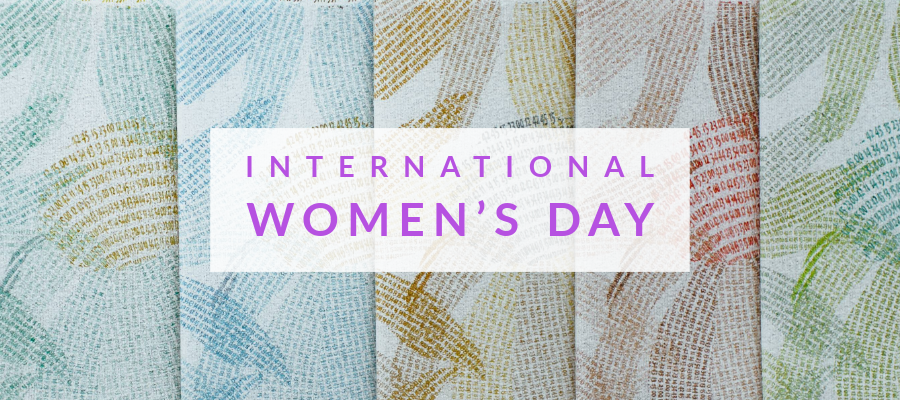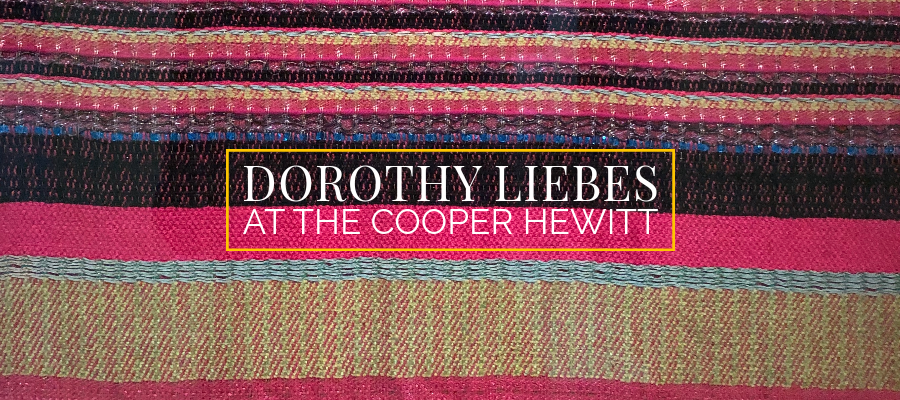
Dorothy Liebes at the Cooper Hewitt
Up now through February 4, 2024, at the Cooper Hewitt in New York City, is A Dark, A Light, A Bright: The Designs of Dorothy Liebes. This exhibit is an absolute must-see for any lover of weaving, textiles, or just good design. Dorothy Liebes was a prolific and influential designer whose work was revolutionary in mid-20th century America. Yet, she’s far from a household name. Even many textile designers hadn’t heard of her until this exhibit opened.
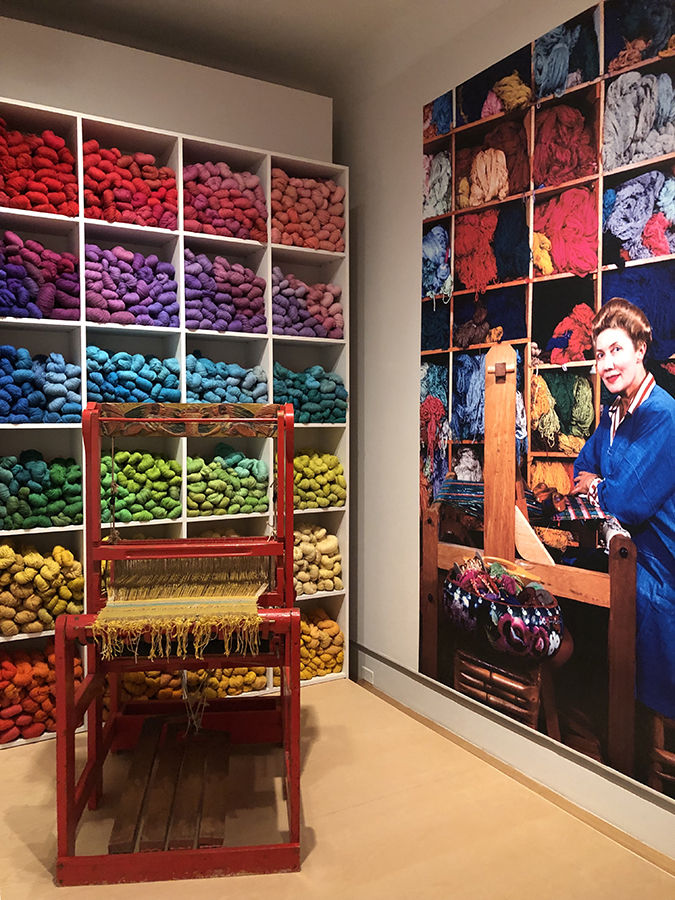
So, who is Dorothy Liebes?
Cooper Hewitt’s website has this description of the exhibit:
“American textile designer, weaver, and color authority Dorothy Liebes (1897–1972) had a profound influence across design fields, helping to shape American tastes in areas from interiors and transportation to industrial design, fashion, and film. The “Liebes Look”—which combined vivid color, lush texture, and often a glint of metallic—became inextricably linked with the American modern aesthetic.
From the 1930s through the 1960s, Liebes collaborated with some of the most prominent architects and designers of the time, including Frank Lloyd Wright, Henry Dreyfuss, Donald Deskey, Raymond Loewy, and Samuel Marx. Fashion designers, including Pauline Trigère, Adrian, and Bonnie Cashin, also used her fabrics, yielding some of the most distinctively American fashions of the mid-20th century.“
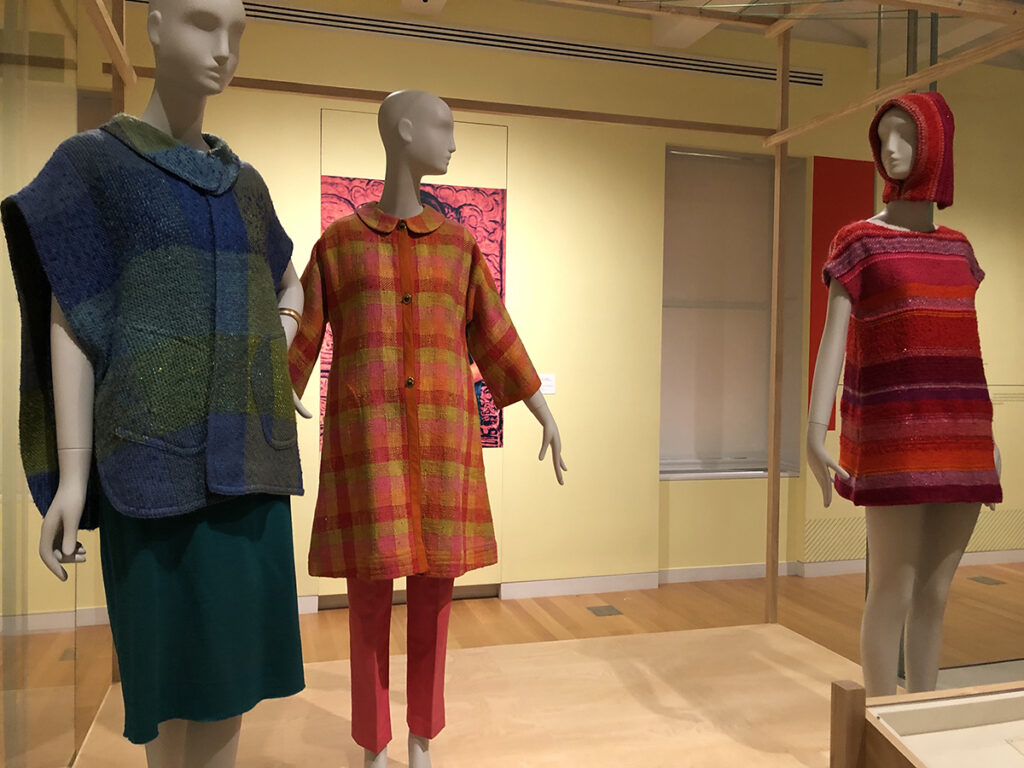
This exhibit has lengths of cloth on display, furniture upholstered with her designs, and garments made with her fabrics. Alongside the actual textiles are photos from interiors and movie stars such as Lucille Ball, all showing her designs in use. Swatches and samples from her extensive studies, images from her studio, sketches, and advertisements all help paint a rich view of the type of designer she was.
What was so striking to see in this exhibit was how intensely Liebes worked with materials.
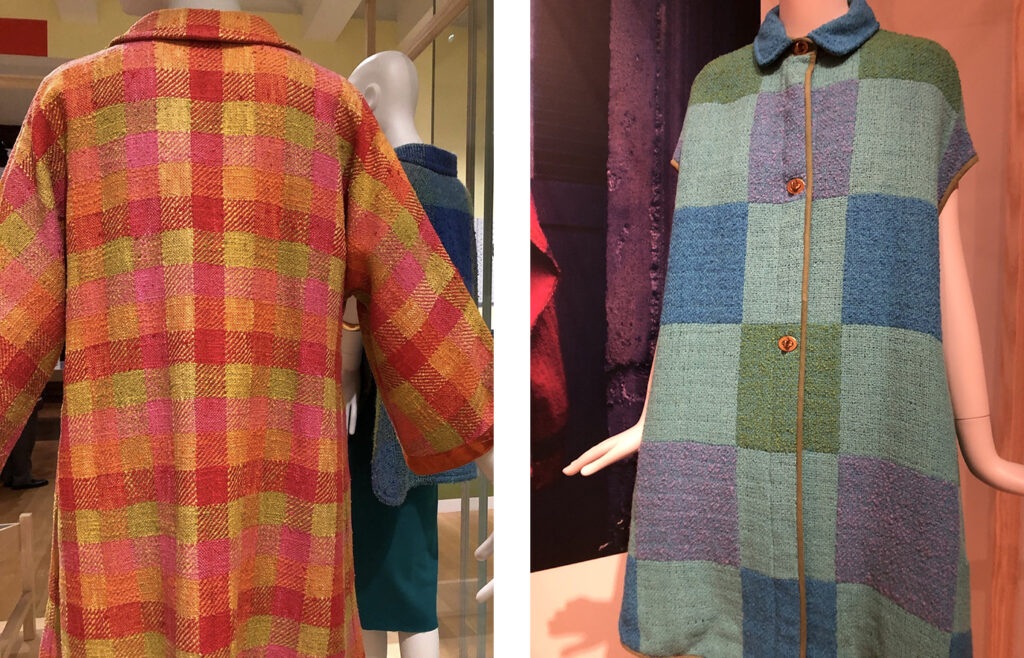
Liebes worked as a textile designer during an exciting time in the textile industry. New synthetic fibers were being developed and made available to the general population. She worked closely with manufacturers such as Dupont to see how these fibers performed. It was important to know what types of fabrics they’d be suitable for and how to use them effectively. She also developed colorlines she knew would sell for these fibers. Yet, all these efforts would be for nothing if consumers wouldn’t buy it. So, she worked with these manufacturers on advertising campaigns to convince consumers to try fibers such as Nylon, Lurex, or Dacron.
Lurex, in particular, became a staple of Liebes’ textiles. She worked intimately with this new fiber and collaborated with Dupont to develop its color palette with options beyond just silver and gold. As a weaver, she was also acutely aware that the eye perceives a thread in relation to those around it, as well as the light hitting it at any given time. In 1966, she said, “Glitter is like vibration. Glitter is what the sun does to grass, what light does to nature.” Using Lurex, she designed fabrics with just the right amount of Lurex to give her textiles the desired look. For example, a striking shimmer or a soft glow. As she once pointed out, “It was not the metallic thread that was noticed but the refraction of light.”
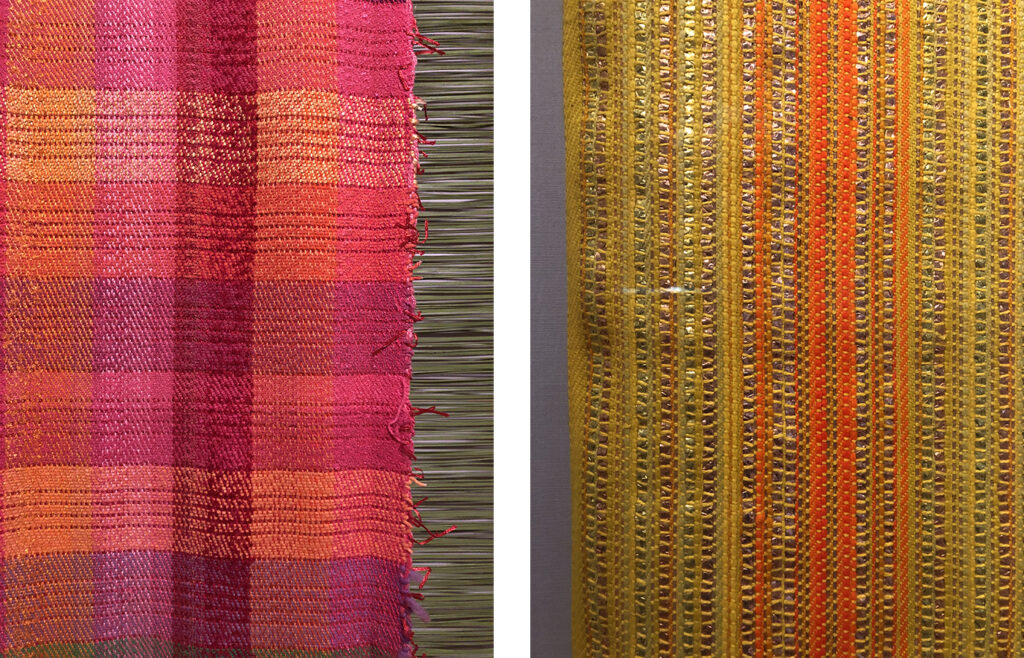
Liebes also firmly believed that good design was not reserved for the rich. She wanted to make well-designed products affordable and available to everyone. It was one of the reasons she embraced these new fibers as affordable alternatives to more traditional and expensive ones.
Liebes was a mentor to new designers.
In addition to designing beautiful textiles, Liebes fostered an atmosphere of mentorship and empowerment in her studio. She employed many women at her studio and worked hard to create an environment conducive to the needs of working women at a time when that was rarely considered. As a result, her influence helped shape a new generation of designers, many of whom went on to have successful careers of their own. That ripple effect continues as this show inspires another generation of weavers and designers.
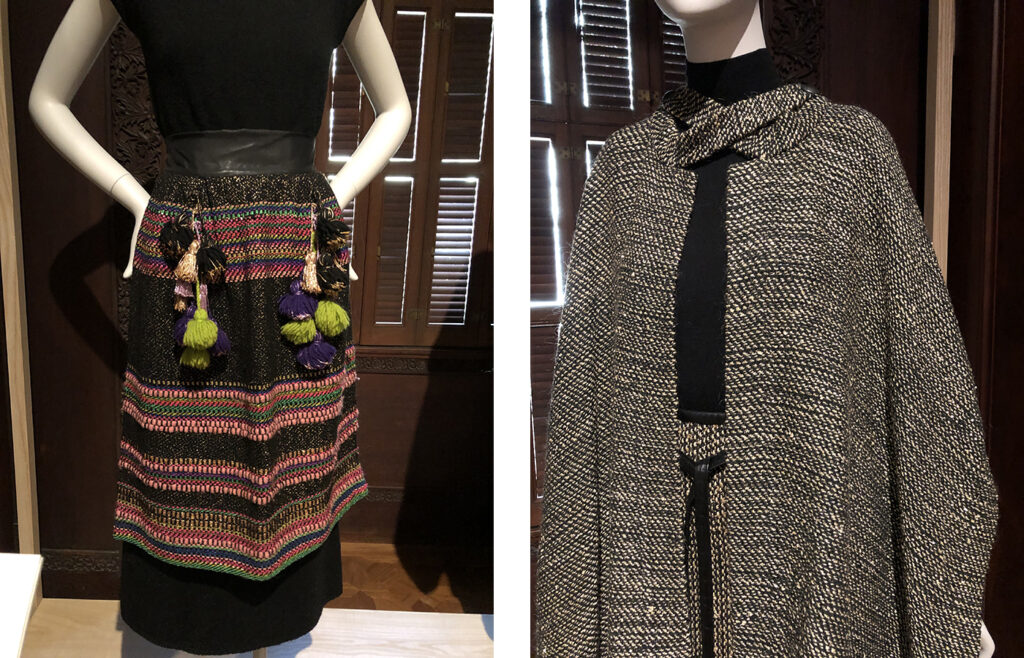
This exhibit runs through February 4, 2024.
If you can’t make it to New York to see this show in person, a beautiful book accompanies the exhibit. Weavers will love that the book includes many detailed, full-page, glossy photos of her cloth. It is the next best thing to touching the cloth in person, which is what you’ll want to do. These fabrics are so rich in texture, it’s hard not to reach out and touch them. In fact, in 1957, she said, “When people don’t feel my fabrics, I am hurt.” Sorry, Dorothy, I would have loved to. If only the Cooper Hewitt would have allowed it!
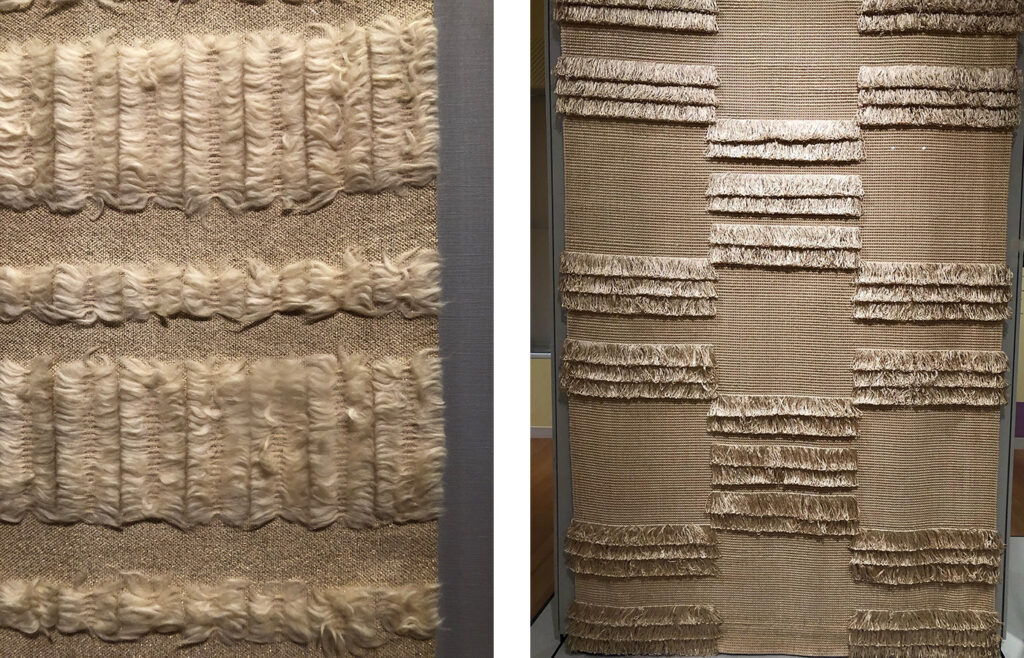
Field trips to museums are perfect for a shot of inspiration.
Visiting museums is always inspiring. These visits often spark something that becomes a pattern, or a whole collection of patterns, in the Design Pool licensable library. For example, this year we were inspired by the incredible Folly Cove Designers exhibit, whose expert block prints had us pulling out our carving tools. Playing with blocks eventually led to our new farmer’s market collection. Who knows where the inspiration from these textured, shimmery textiles will take us?
Share this post
Author
DESIGN/COLOR TRENDS AND AWESOME INFORMATION IN YOUR INBOX
Sign up for our monthly trend letter





